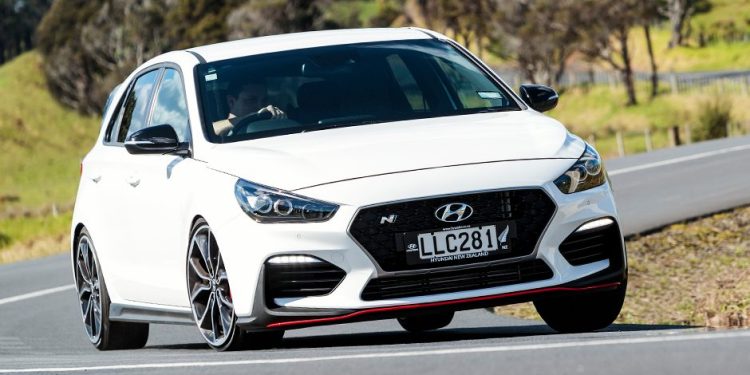2018 Hyundai i30 N review
Words Kyle Cassidy | Photos Tom Gasnier
Hyundai is late to the hot hatch party but it’s turned up with a great offering in the i30 N, a car with genuine driver appeal.
The massive Hyundai conglomerate makes all manner of contraptions from trains to tanks but not since the automotive division turned out South Korea’s first car in 1975 has it built anything with genuine sporting intent.
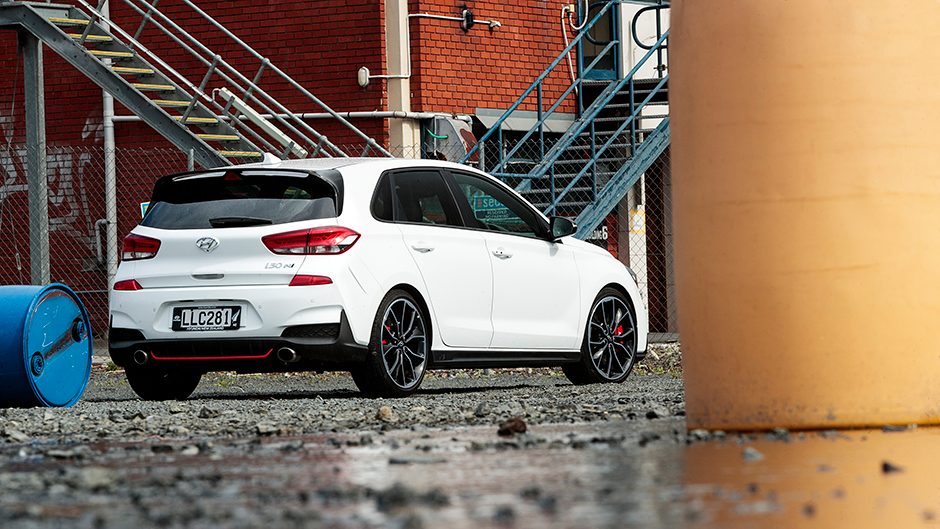
What about the Tiburon you ask? Former Editor Owen once referred to it as the Korean 911 but we think he was suffering a soju-induced hangover at the time. He was also fond of the Veloster Turbo but it was dynamic flop.
Hyundai has been getting serious, however, forming a motorsport division to oversee its WRC actions and it has spawned Hyundai’s N brand. Its first offering is the i30 N. Owen raved about the i30 N earlier in the year when he drove a pre-production unit, (seems he has a thing for Hyundais) and it’s third time lucky as now that the car has landed officially, we can confirm it is a genuinely good thing.
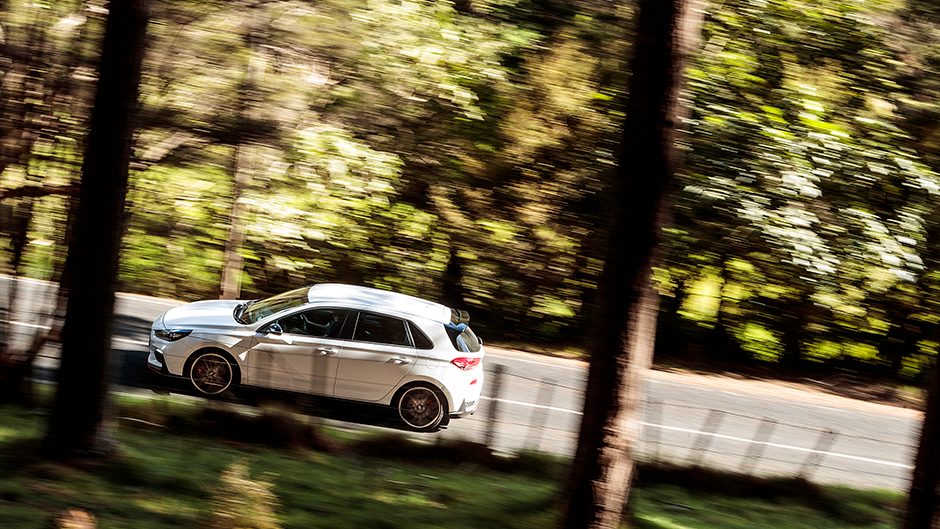
While not a groundbreaker, Hyundai has added tasty ingredients to its i30 to deliver a car where the emphasis is more on driving pleasure than benchmark numbers. That sounds like they’ve given themselves an easy out but concocting a driver’s car is a difficult brief to achieve. However, Hyundai’s has and it’s a solid effort for its first stab.
There are two versions of the i30 N, though only the Performance model is offered here. Its elements include continuously adaptive dampers with solenoid controlled valves for better management of the oil flows, an electronically-controlled LSD (humorously named the N Corner Carving Differential) and 19-inch wheels wrapped in specially developed Pirelli P Zeros.
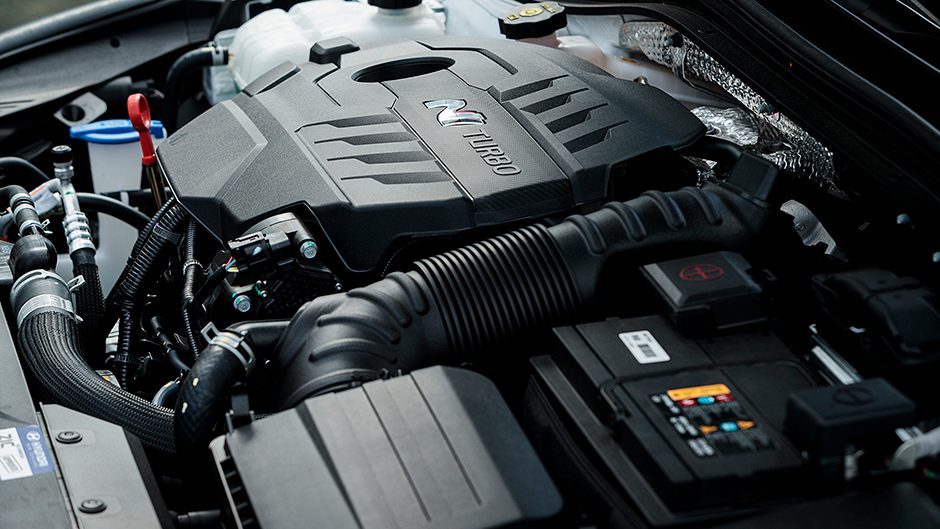
For the Performance model, the 2.0-litre turbo’s output is lifted to 202kW while there’s 353Nm of torque, or 378Nm on overboost. The only gearbox is a six-speed manual which will ultimately limit its sales potential here, until the rumoured eight-speed dual-clutch materialises.
With the ex-head of BMW M now in charge of the N team, the i30 N has a few traits common with M cars, myriad drive modes and custom settings chief among them. There are two drive buttons on the steering wheel; Eco, Normal and Sport modes accessed via the left button, and on the right there’s the N mode switch which also accesses a Custom setting. This lets you choose the tune of the suspension, steering, LSD, engine, rev matching, exhaust and ESP, each with two or three settings (Normal, Sport and Sport plus).
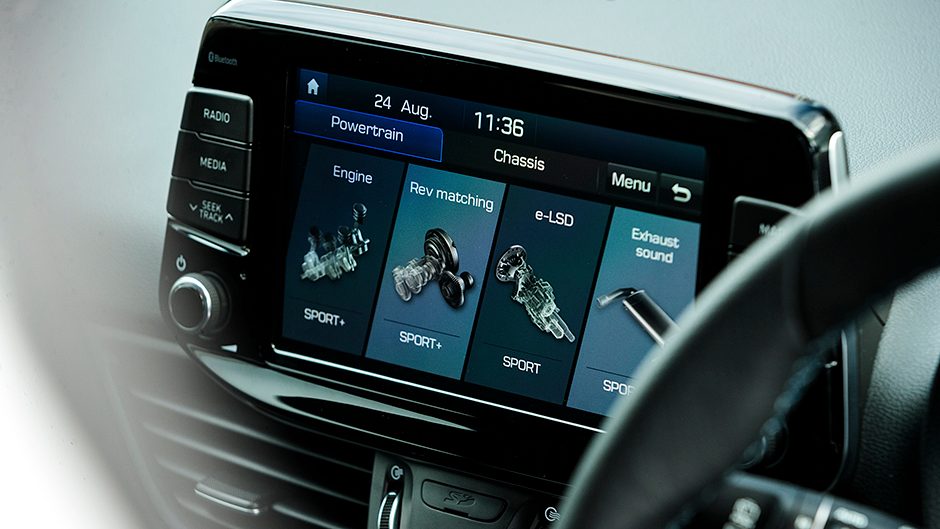
There is no Comfort mode here; it’s a hot hatch and so Normal delivers a sporty ride but it’s hardly busy either. Down Under cars have been given a slightly softer suspension tune to deal with bigger bumps better, and progressing through the Sport modes adds the expected starch to the damping.
There’s a rorty, valved exhaust though all you hear is engine noise in the cabin via a sound generator. But lower the window and you can better hear the sporty tone of the pipes, including the crackles on overrun in the N mode. The LSD in its Sports mode can exhibit some slipping and binding at low speeds, especially on full lock but in Normal that racy nature disappears.
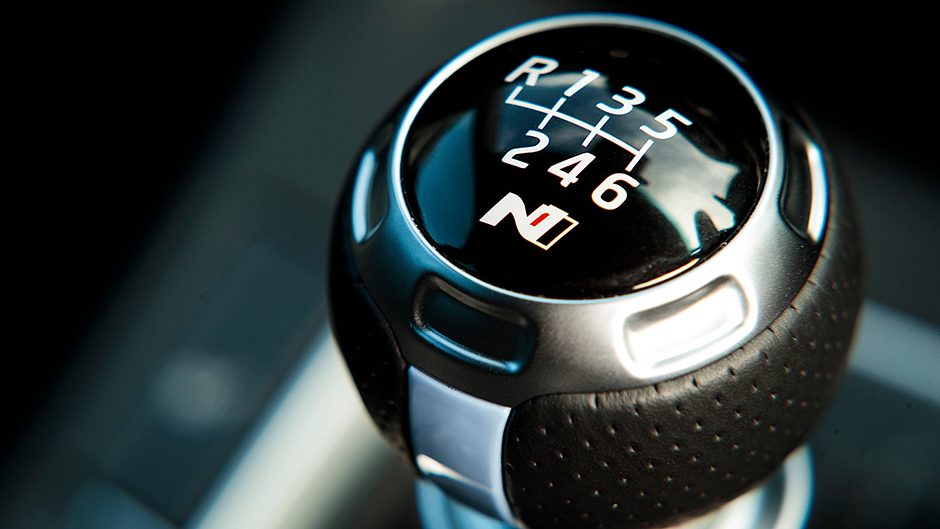
The manual gearbox doesn’t make this a chore to drive as the clutch is light and easy to engage, there’s a hill holder and with all the torque you can skip gears around town. Still it’s a little hard to sip your long black and negotiate traffic at the same time. Switchable rev matching for smoother downshifts is not all that effective at urban speeds unless it and the engine are programmed to their racier setting.
The i30 N garners inquisitive looks and we like that its appearance is sporty but not shouty. There’s an N-specific front end with bigger cooling inlets, and air curtains on the bumper help the flow around the wheel arches, which are larger on the N to help house the 19s. It sits 8mm lower than a regular i30 and the addition of side skirts ground it further. Most of the chrome has been blackened and the rear wing is discreet for a hot hatch.
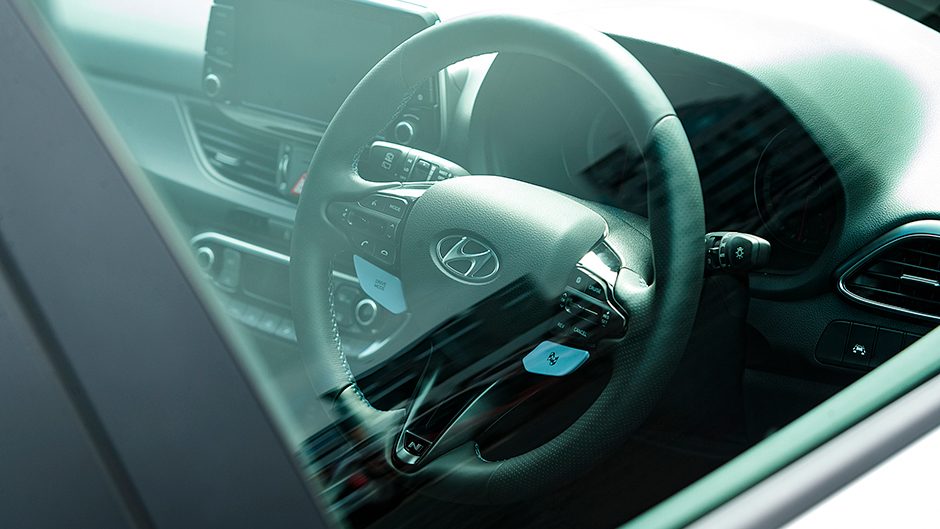
Inside it’s subtle too. The seats are trimmed in microfibre and are supportive in all the right places, yet the bolstering won’t cause any bruising on entry. There’s good adjustment too. It’s otherwise pretty standard i30 fare, save for the instrument panel with its variable shift lights and the sports wheel with its drive buttons. There are the usual convenience features and a few active safety helpers, with AEB and lane keeping, though active cruise is missing.
Boot space isn’t hampered by the stiffening bar between the wheel wells, and it has five seat belts, unlike the Type R. Being a compact hatch it’s practical with just enough space for family life, though a larger than average turning circle makes parking a little trickier.
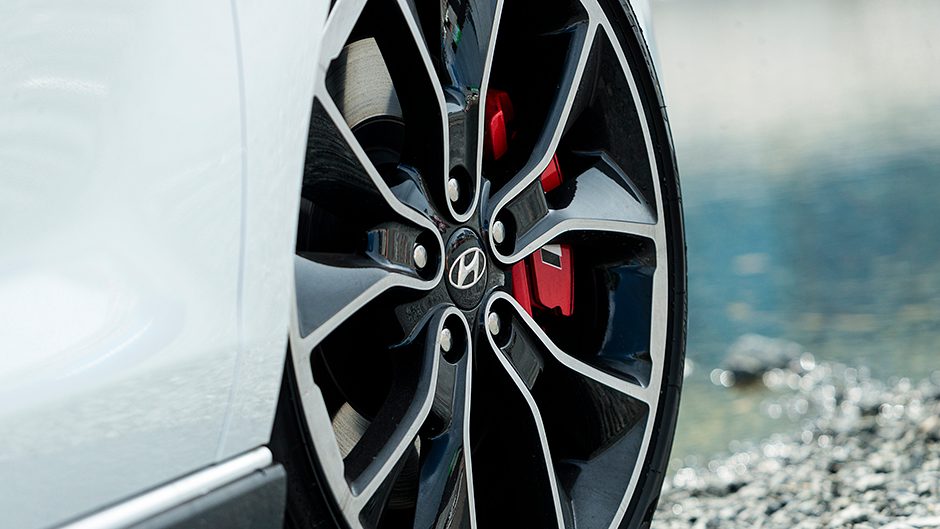
Yeah, so it’s liveable, but what about that promise of a driver’s car? Once outside the urban limits, hit the Sport button and the N perks up. There’s a good response and no palpable lag in the 2.0-litre’s delivery and even though it’ll spin and deliver to just past 6500rpm, it’s more about the meaty midrange.
This isn’t a sprint champion as it’s tricky to get off the mark quickly, the torque easily hazing the front tyres, especially when invoking the launch control. With some effort we managed 6.5sec, but to replicate the 6.1sec 0-100km/h claim would need a stickier surface. The shift action is only ever slick, never baulking at being rammed through the gate and even the second to third shift flows nicely when rushed. While it’s nice to have the rev matching function, we went without it given the sweet placement of the pedals, and it’s a driver’s car afterall, one that revels in bends.
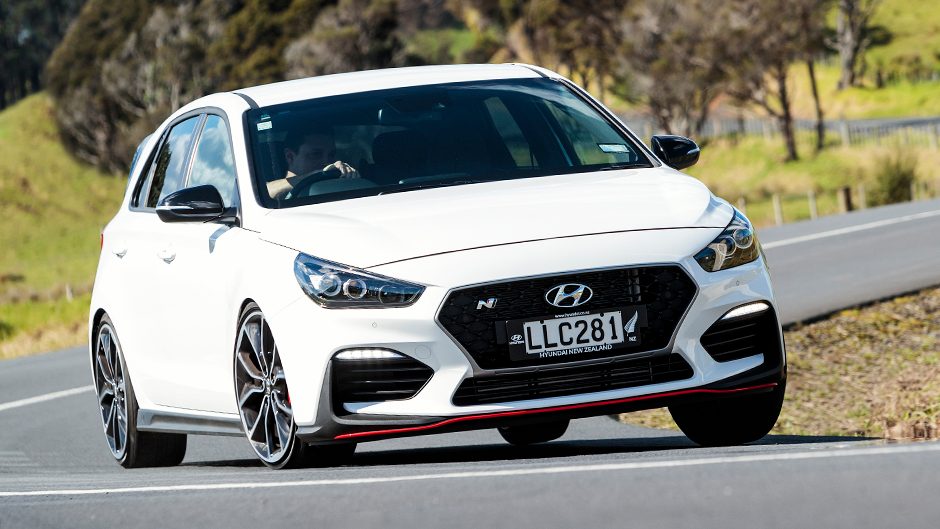
Into roads proper, we access N mode for max attack and everything begins to gel more effectively, with the engine reaction spiked further and the i30 locked down. The continuously variable nature of the dampers allows the Sport Plus setting to work on road too, the N flowing compliantly over undulating trails.
The rear is well rooted – even a mid-corner lift doesn’t upset it much – and that stability sees the front turning into corners better than the i30’s weight split would suggest. They’ve rejigged the entire steering set-up here, with a new motor living on the rack rather than the column, for optimum feel and performance. The steering is quick acting (2.1 turns), well assisted and imbued with enough feel to help you manage the front end through the more challenging turns.
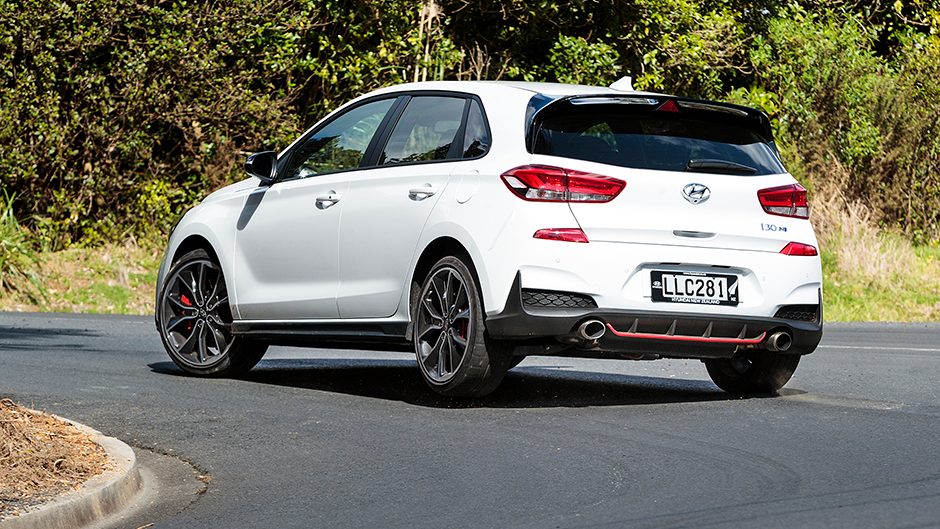
As long as you’re not carrying an excess of enthusiasm into the bends, this latches onto the cornering line quickly and you can gas it off the turn aggressively thanks to the marvels of the LSD. The diff works away to get the i30 N peeling off the curve while the tolerant ESP allows the driver to manage the eventual power-on understeer in the tight going with either a little less lock or a wee lift.
This is a responsive set-up which is easily adjustable to the ever-changing demands of a nasty back road. There is a whiff of torque steer in a straight line and it can follow the contours of the road but otherwise it’s well mannered for a fast front driver. Even the brakes work well, the pedal initially soft but then they bite once you push harder, and they hang in there too. The tyres are rowdy, drowning out the exhaust noise, but otherwise this is a great driver. As for fuel use, it ranges from about 9L/100km for the everyday stuff up to the 15L/100km mark when enjoying its talents.
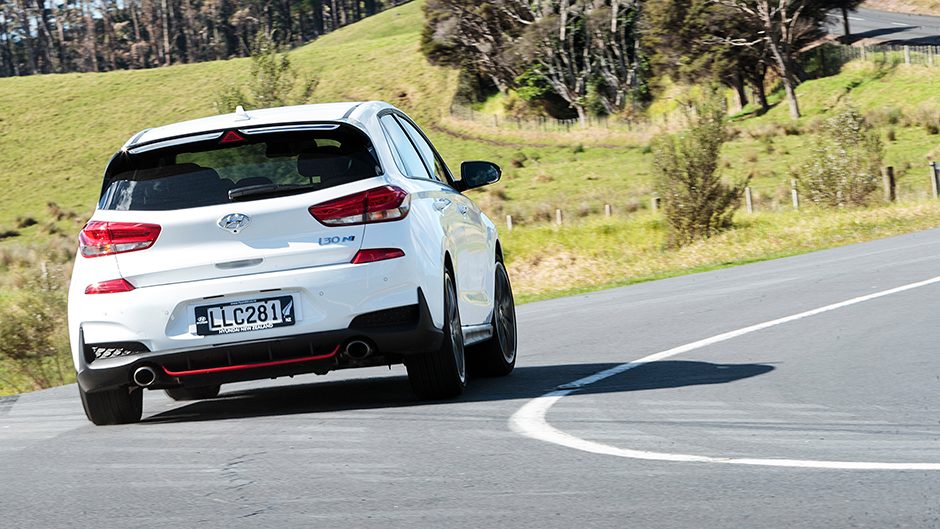
The i30 N might not be Type R fast but it is a better driver’s car than the Golf GTI. At $54,990, it undercuts all the key competitors, but the same car is significantly cheaper in Australia. We reckon a price tag under $50k would have made this even sweeter but otherwise it’s still a cracking drive.
| Model | Hyundai i30 N |
| Price | $54,990 |
| Engine | 1998cc, IL4, T/DI, 202kW/353Nm |
| Drivetrain | 6-speed manual, front-wheel drive |
| Fuel Use | 7.1L/100km |
| C02 Output | 163g/km |
| 0-100km/h | 7.31sec |
| Weight | 1489kg |


